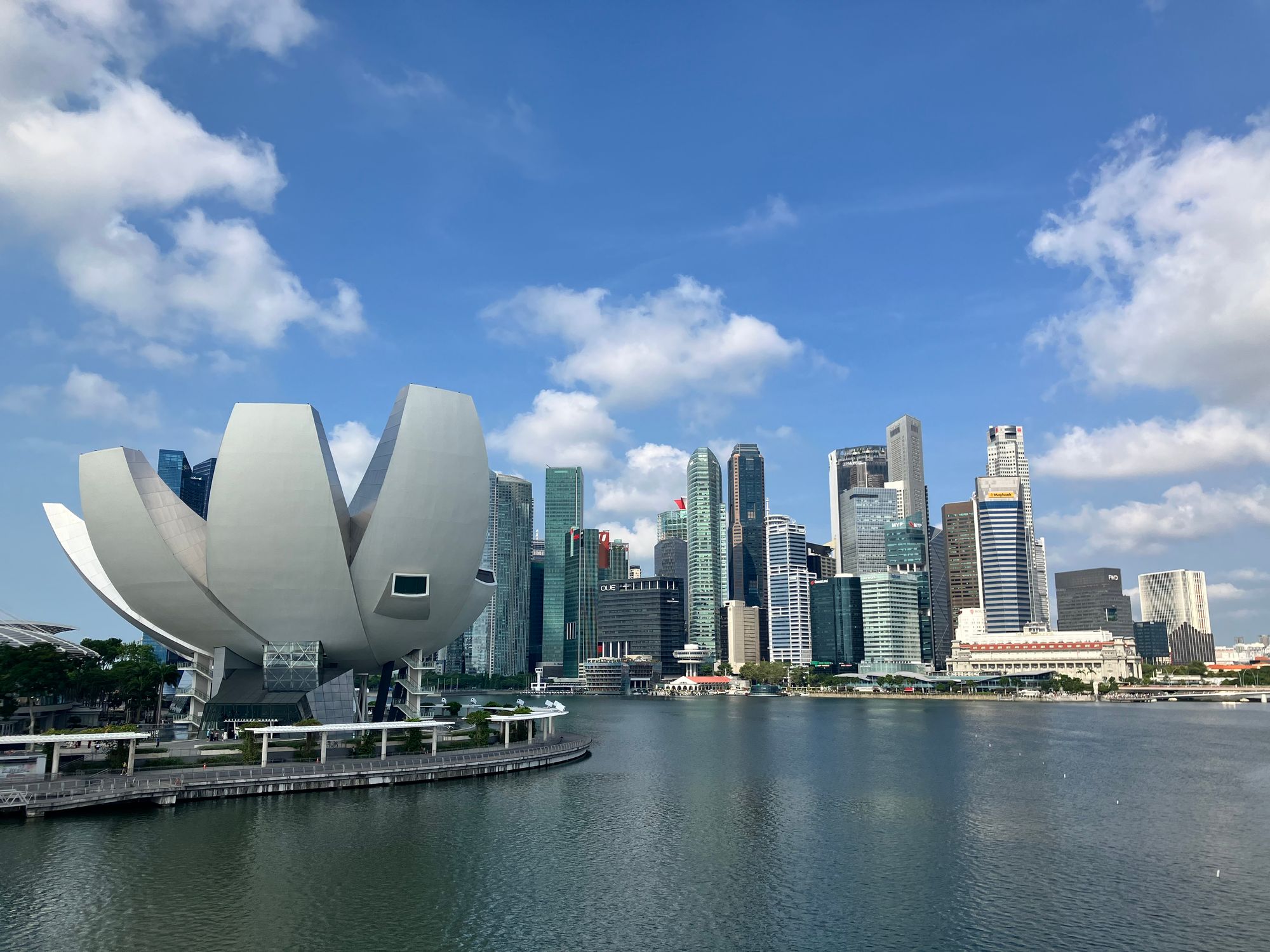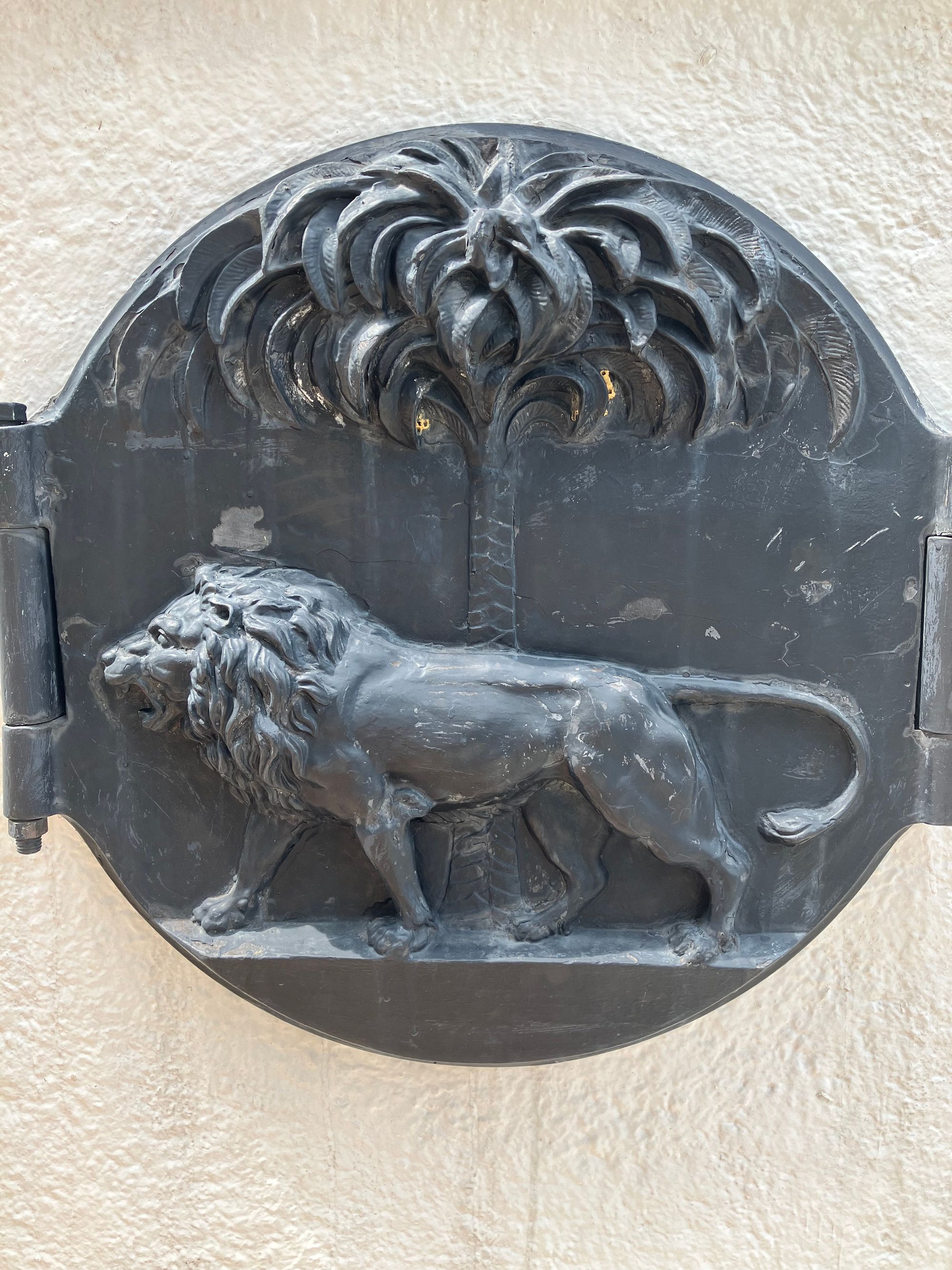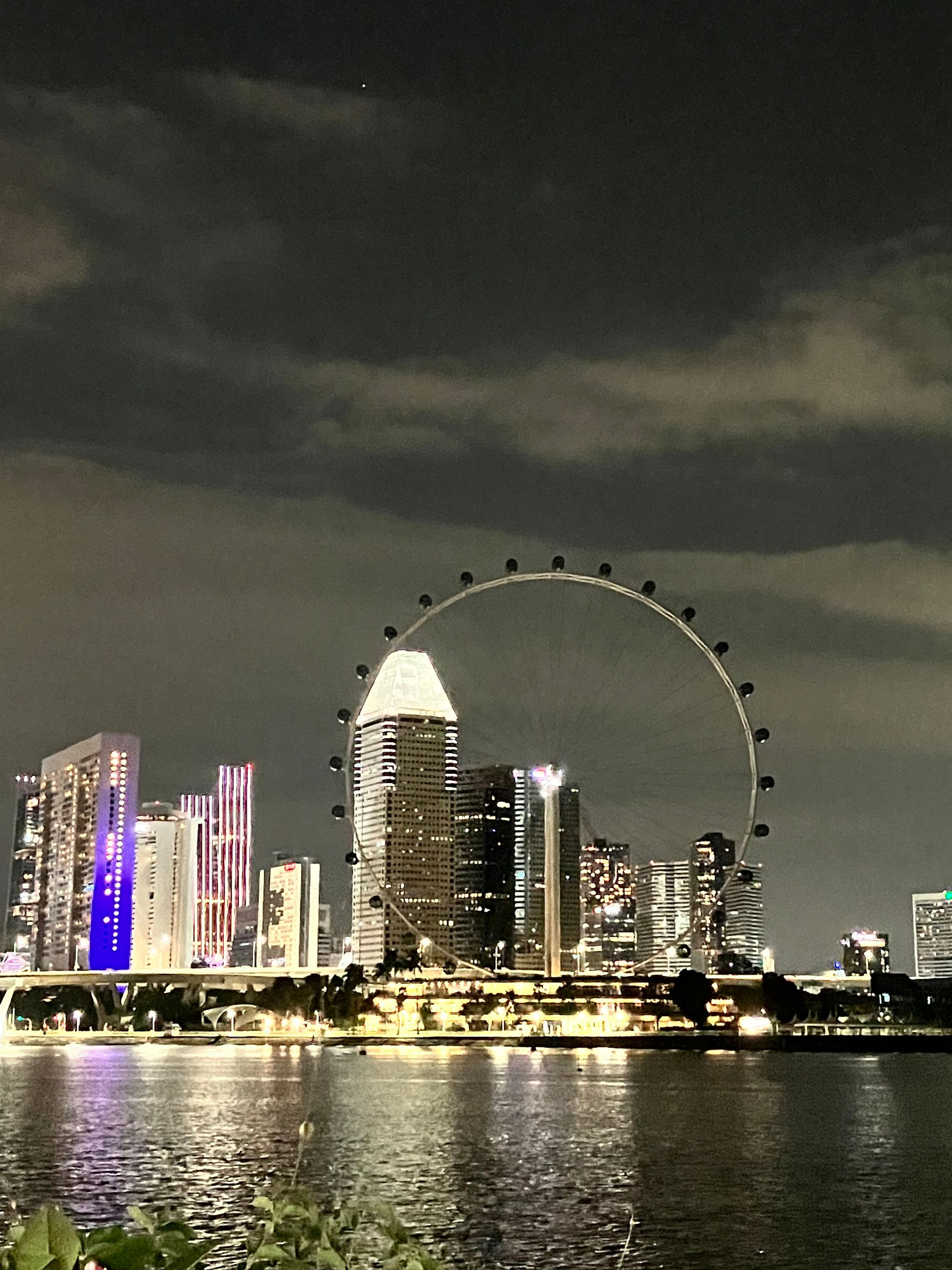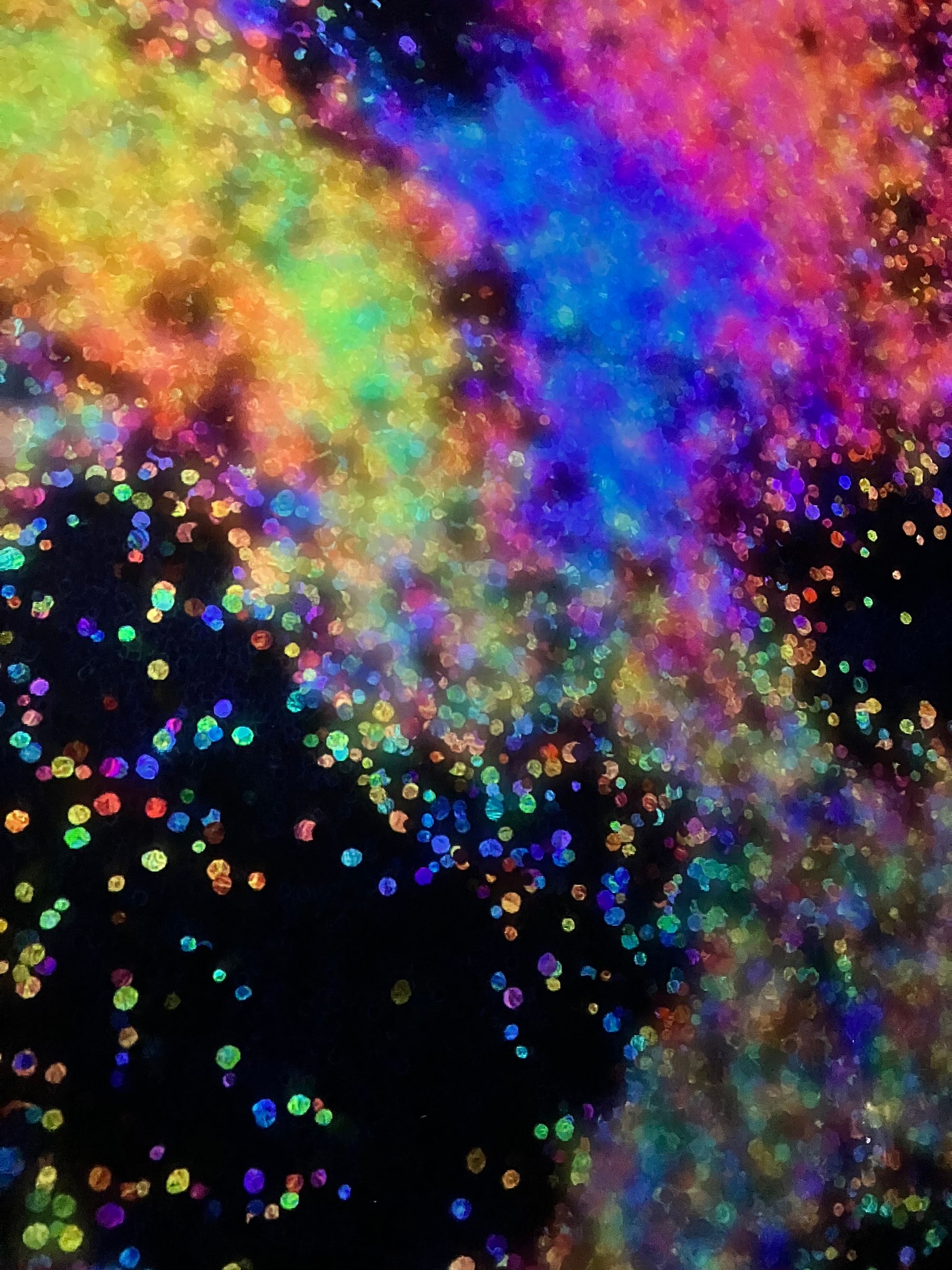Singapore Sling
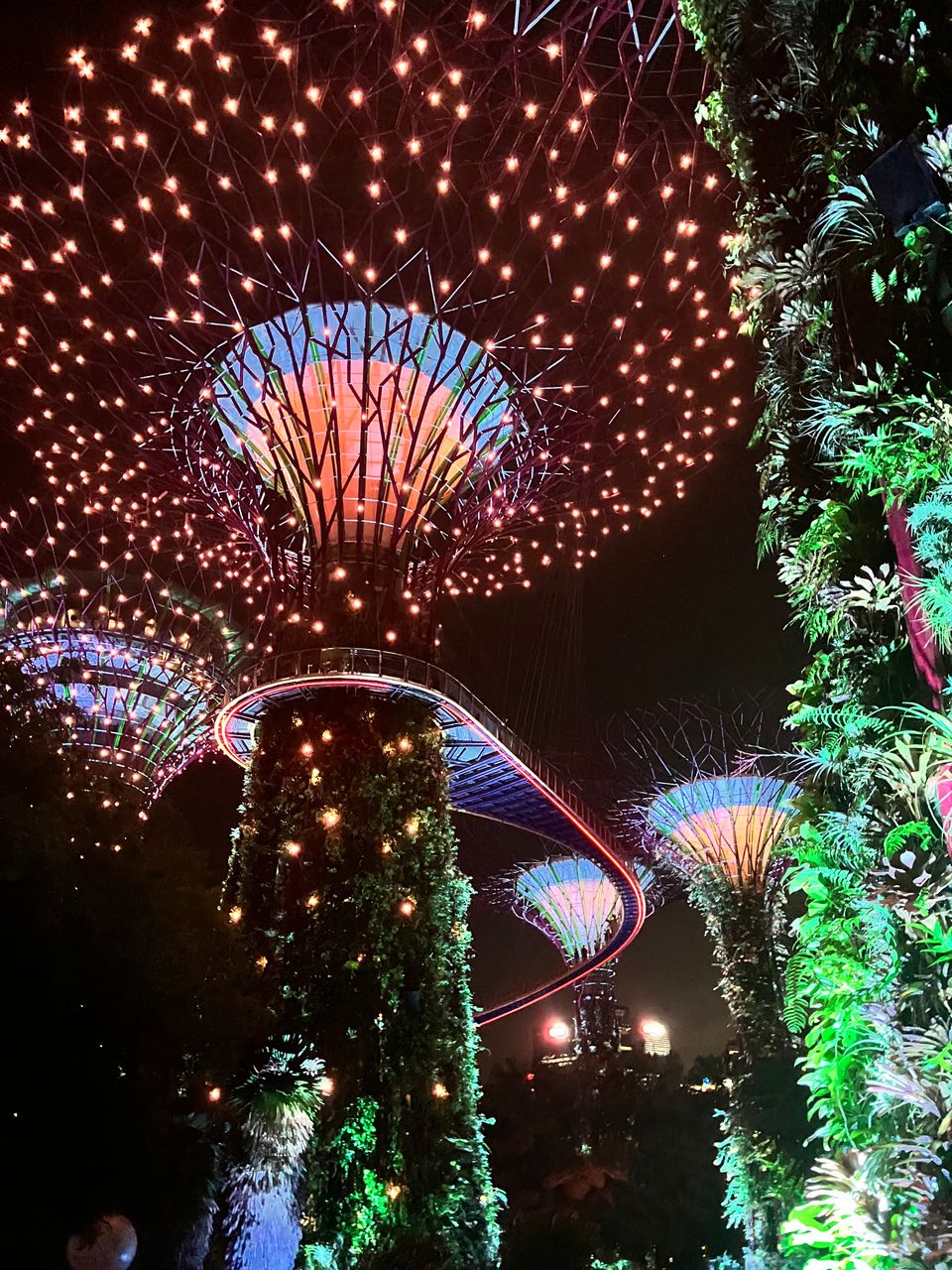
We were duly warned, I have to admit that. At the checking-in counter of Zürich airport, heading to Singapore, a kind Asian clerk told us that we were in for "an experience". We smiled and oblivious of the implications of that word choice, set off to an adventure that was long in the planning and that was so eagerly anticipated by the whole family. The flight lasted 12 hours, and despite the most amazing air-hostessing, variety of food, and drinks, of all our wishes being catered for, and despite the most exciting entertainment system, you feel these hours. They were not felt by our seven-year-old who had the best time ever being allowed to watch all the newest cartoons on offer on the plane, but for middle-aged us, it was hard.
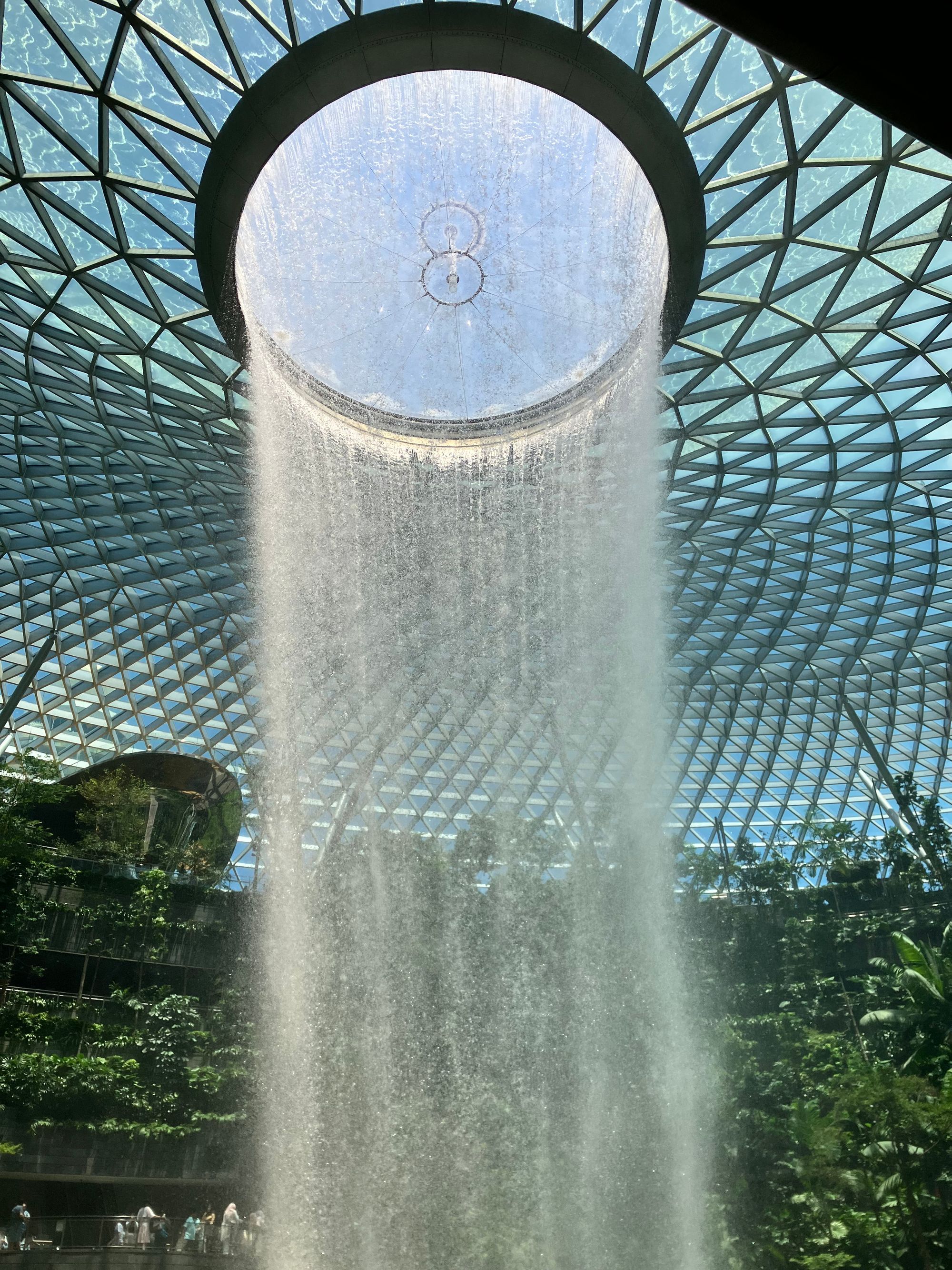
The parents landed all groggy and thoroughly exhausted and the wave of heat that rolled over us and over our April-in-Switzerland puffer winter jackets did not help at all. In another life with more time and ability to focus, I would like to write a novel dedicated solely to the humidity of Southeast Asia. Because that alone is such a complex experience, that only a full-fledged novel would do it justice. You will sweat there, even if you have never sweated before, even in places that were never before touched by body odor. Putting usual suspects aside, like armpits or feet aside, the unexpected droplets will run down your spine, down your flanks, behind your ears, and under your eyes. The locals stare at you in total incomprehension. They do not sweat, quite the contrary, they smell like exotic resins exuded by fragrant trees. Go figure.
There is only one thing that puts cool Singaporeans into an uncontrolled frenzy and rattles them greatly. That would be the fear of the durian fruit and its pungent smell. Everywhere you go, warning signs are promising exorbitant fines and close to medieval torture to anyone who even thinks of bringing the poor fruit aboard or inside any premise. I haven't tried durians, but as always, when someone or something is so viciously persecuted, the instinct is to be on its side. The smell of durian is not bad in my experience, it is only sickeningly sweet and, admittedly, not refreshing in the heat of the region.
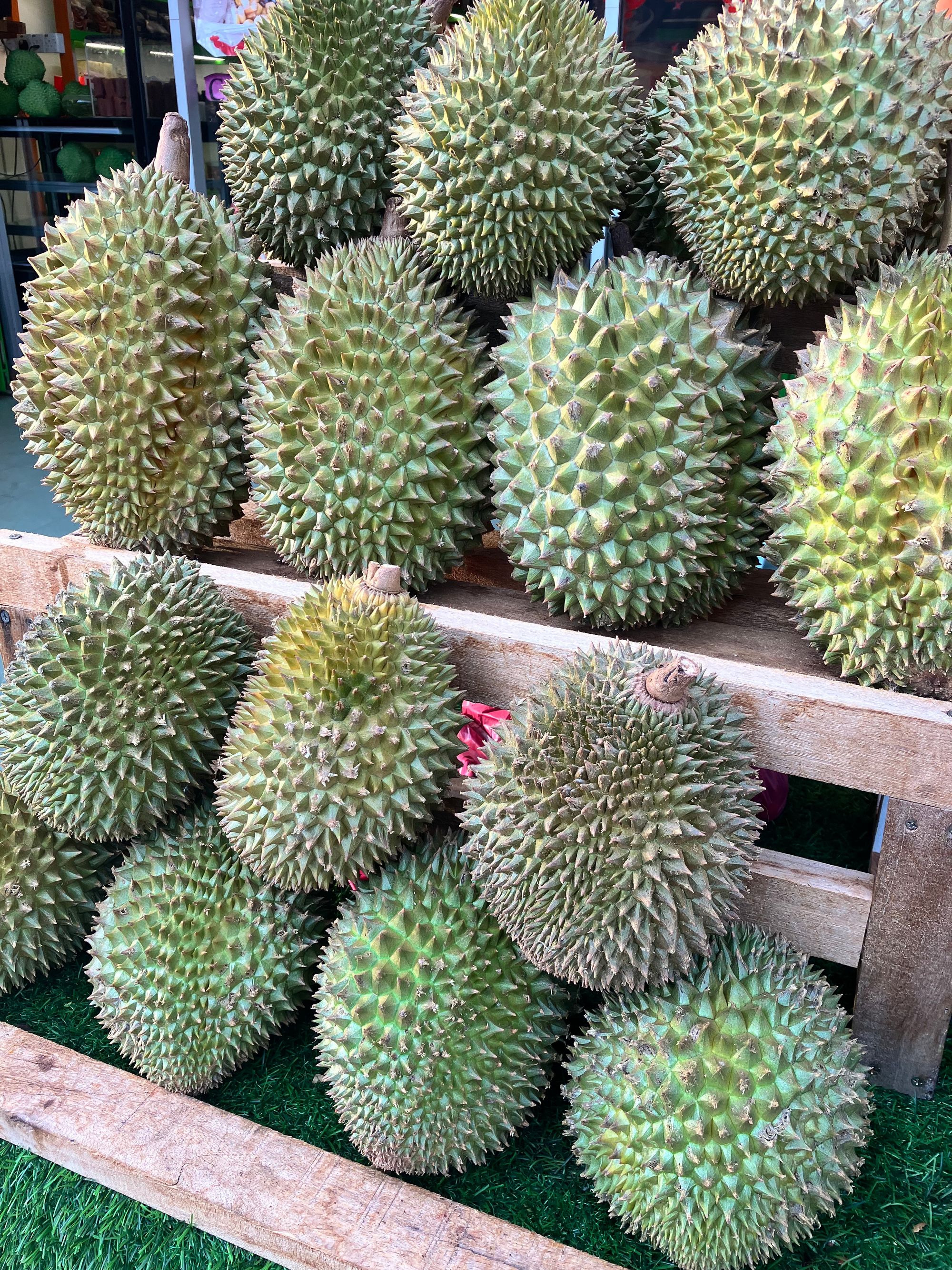
Singapura, which means Lion City in Malay, looks not like an actual place but like a dreamed-up construct, an abstract ideal to whom the rest of Asia aspires. Clean, big, perfectly organized and functioning, prosperous beyond anyone's wildest imagination. Stepping into the Jewel Changi airport feels like stepping into a fantasy, what with its Rain Vortex waterfall tumbling down through a funnel on the ceiling, with its vertical gardens, nature-inspired installations, and robot cleaners everywhere. Mind you, coming from the best-planned and structured Switzerland makes you rather hard to impress, but even to our glutted selves, Singapore looked world-class and beyond beautiful. Unusually silent for a metropolis, devoid of excessive traffic because of its high taxes on cars, and with air smelling faintly of tea. Moreover, it is indeed a Garden City, nature has been preserved in such a ratio, that the architectural wonders never overshadow the lush, luxuriant, vibrant greenery of the space. Millions of shades of green are around you, an abundance of ferns, palms, frangipani, and bougainvillea, all bursting in colors, with waxy, thick, juicy-looking leaves. The roots descending from above the tree tops, strange grafts of seemingly distinct plants thriving on the same trunk, everything blooming effortlessly, budding, pushing through, and evolving in this steamy, humid, perenially sunny climate. A sight to behold for anyone, but especially for someone who, sadly, lacks a green thumb.
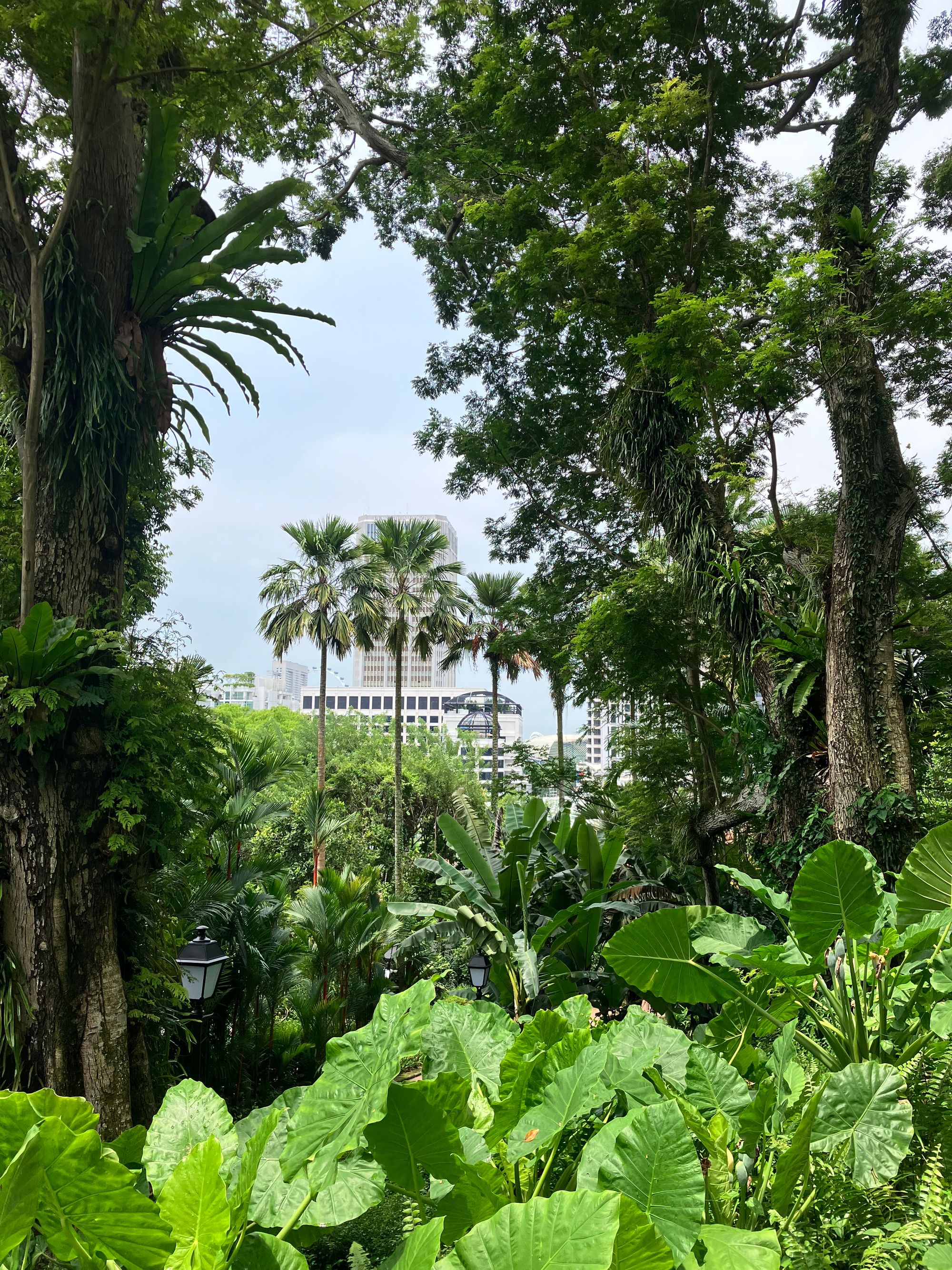
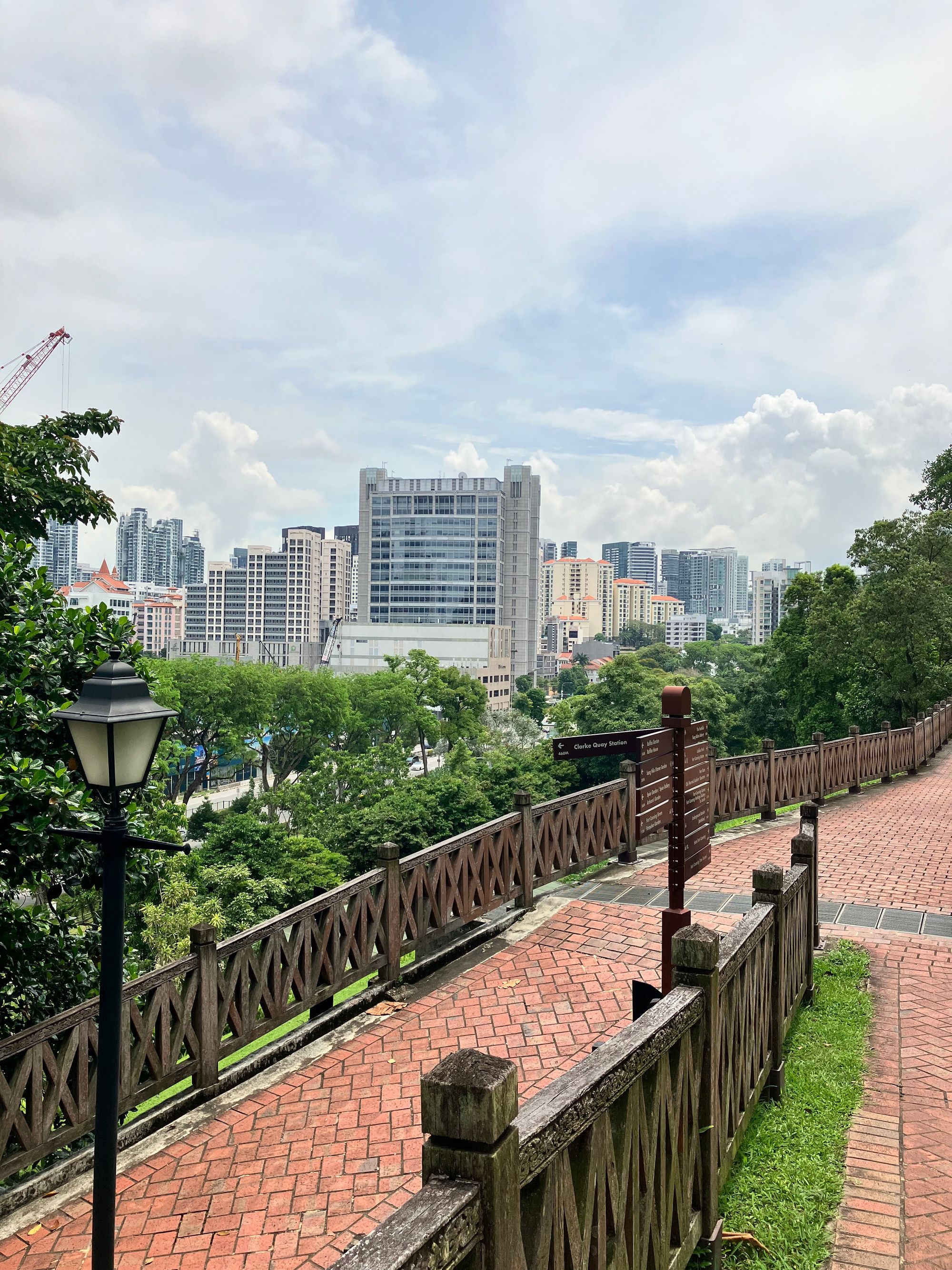
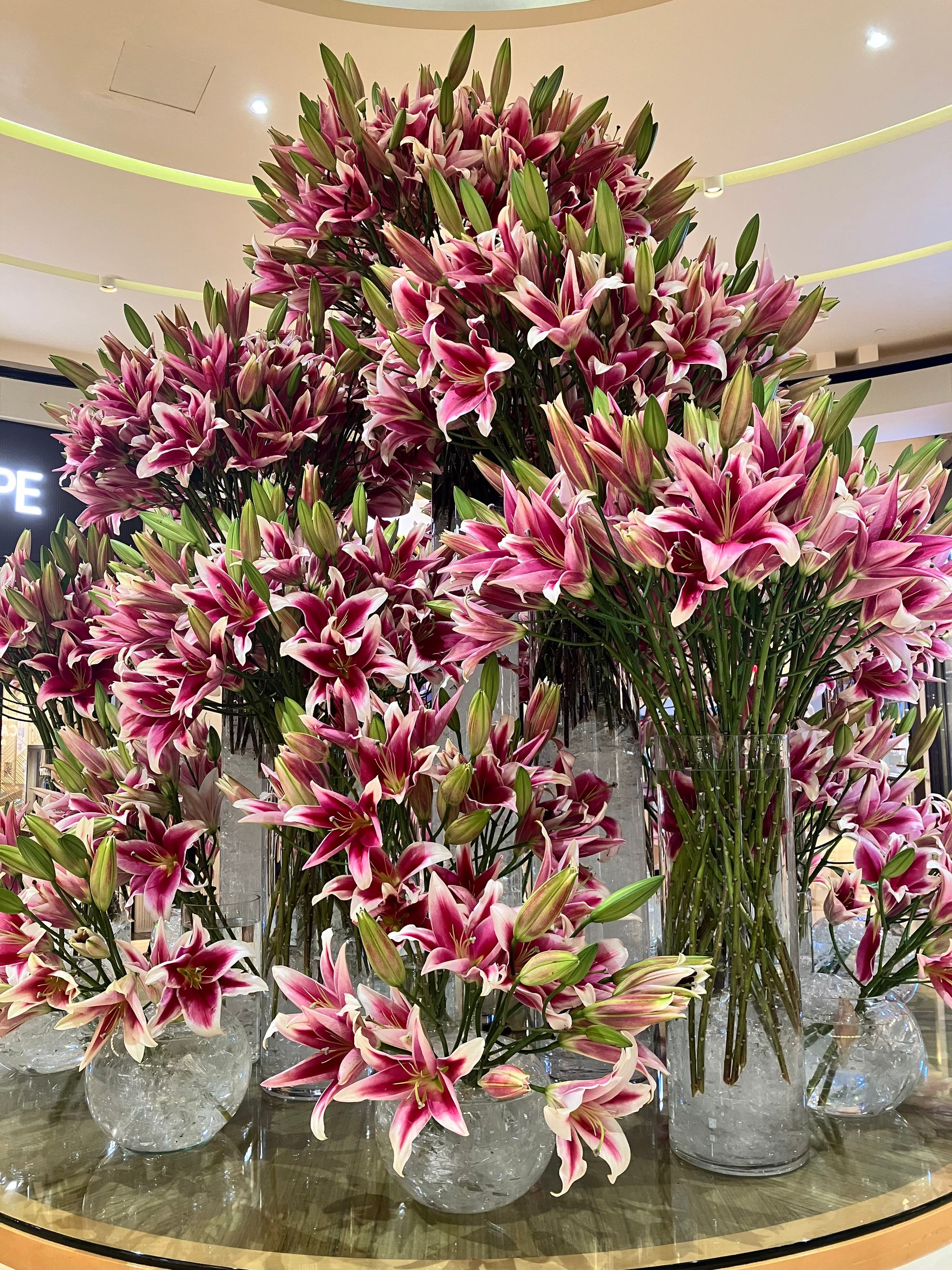
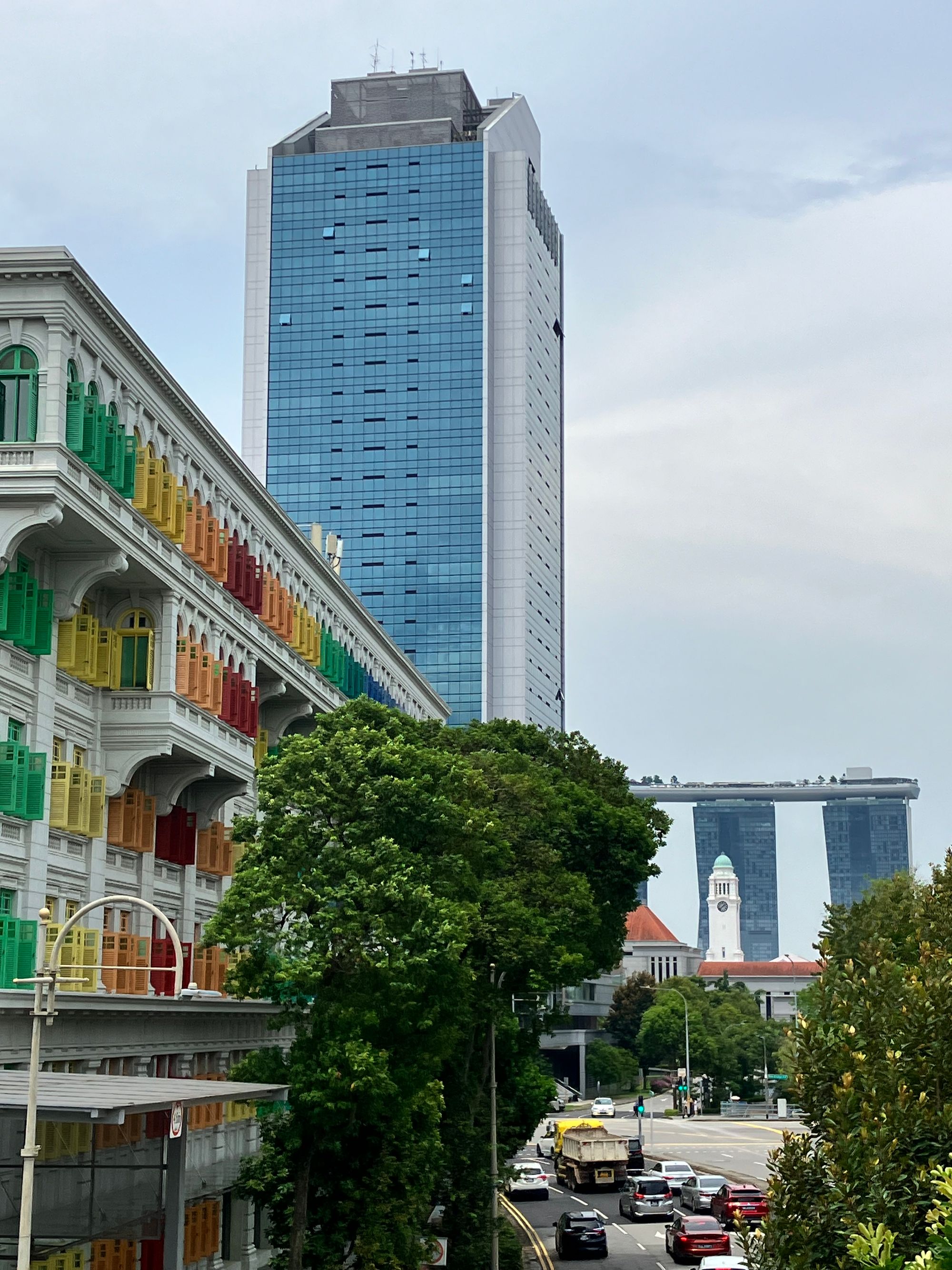
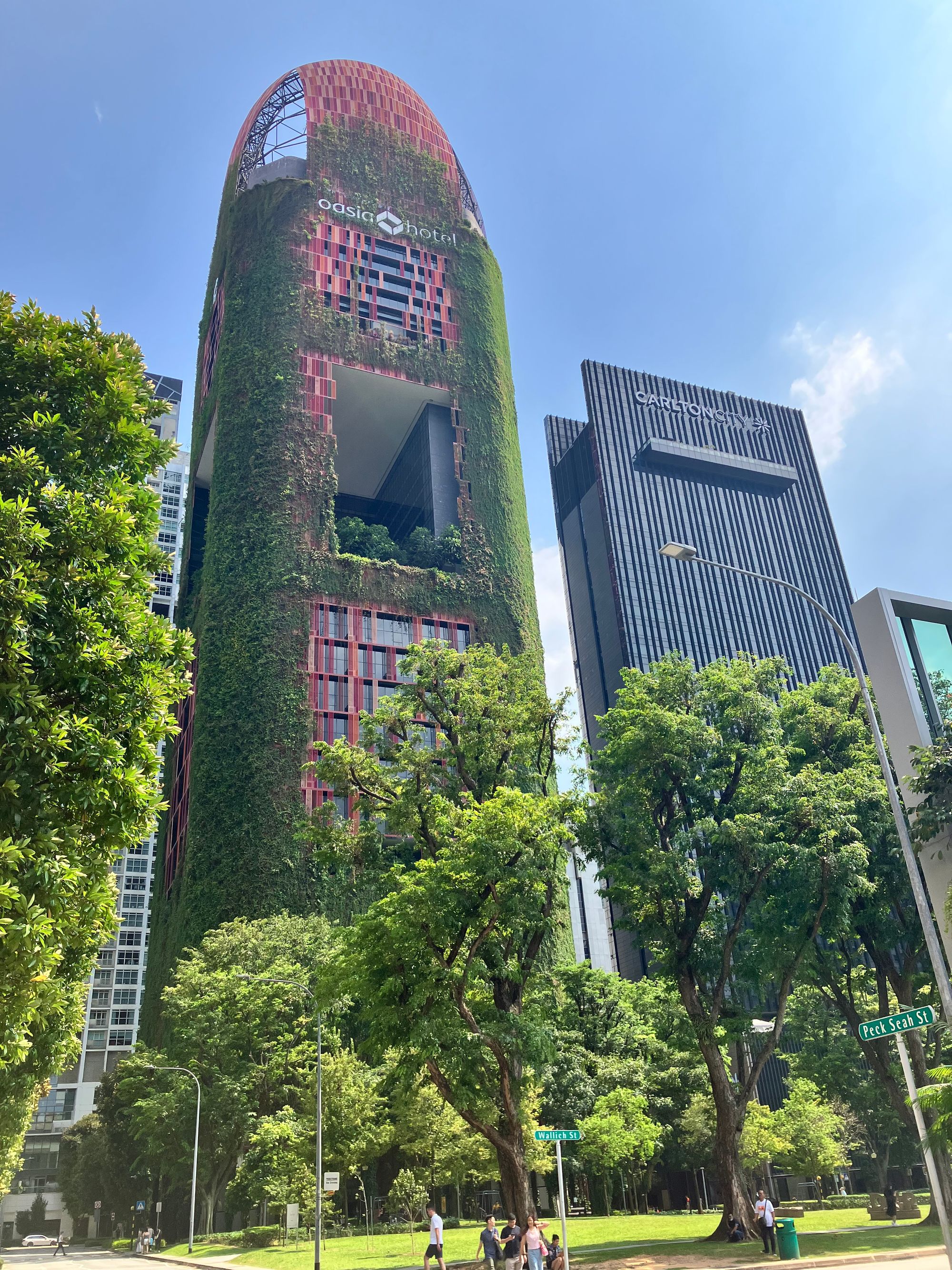
The sightseeing started from the most iconic spot, the promenade overlooking Marina Bay, which is home to the imposing statue of Merlion, a mythical creature that is a half lion, half fish, and which gives tribute to the humble origins of the city as a fishing village. Across the water is the world of even greater illusion, immense boundless wealth that is a prerogative if you intend to enjoy a stay in the Marina Bay Sands hotel, a futuristic, uglyish structure with an alien spaceship perched atop three giant columns. The rooftop pool is something of a legend in its own right. I suppose that all architects are plagued by the limitations of resources that the investors burden them with and that their vision is only a fraction of what they could ideate if unlimited means were available. Well, that ideal of bottomless money bags actually happened in Singapore. Money was not a problem, and the brief was "go as big and as lavish as possible".
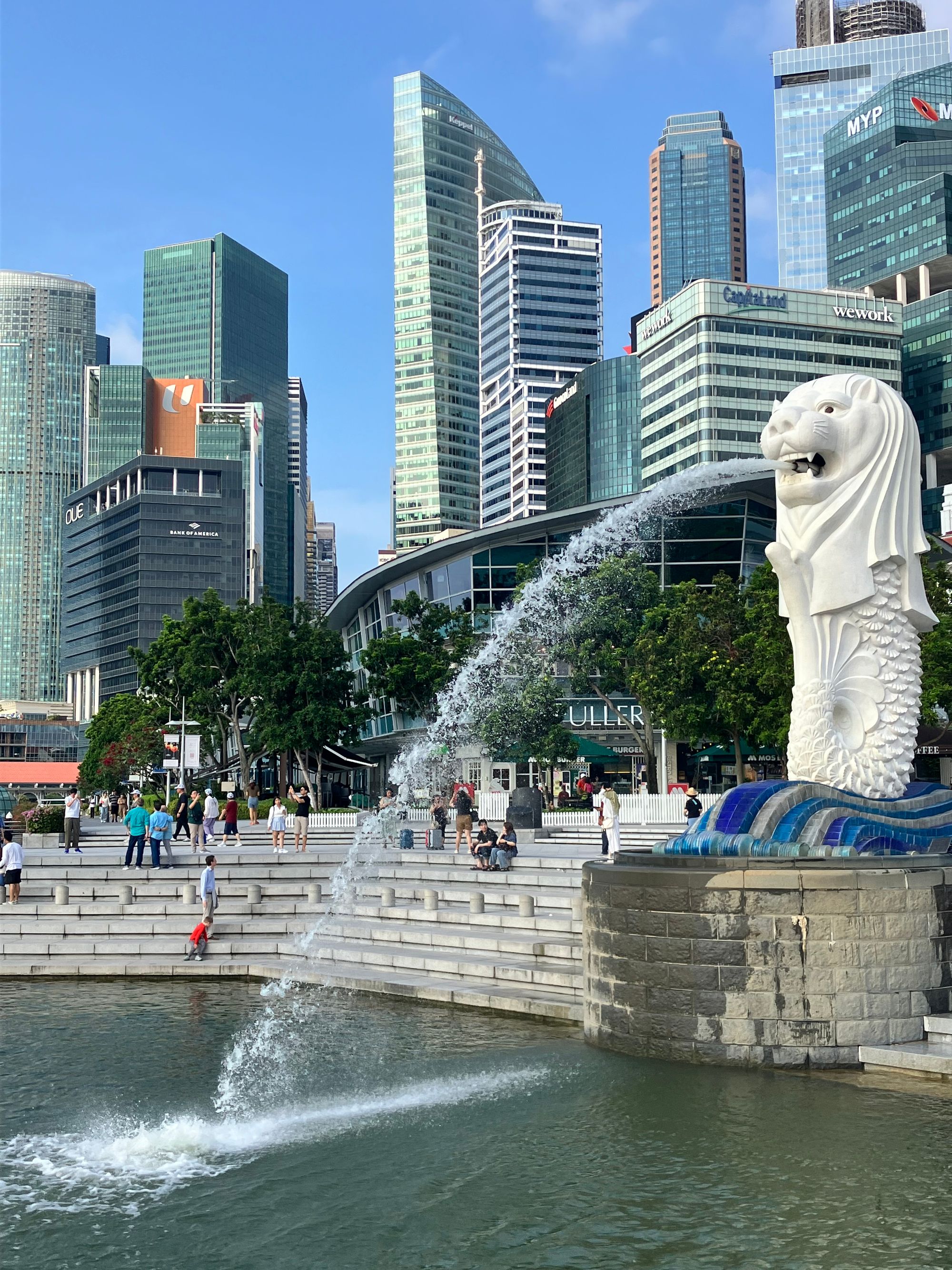
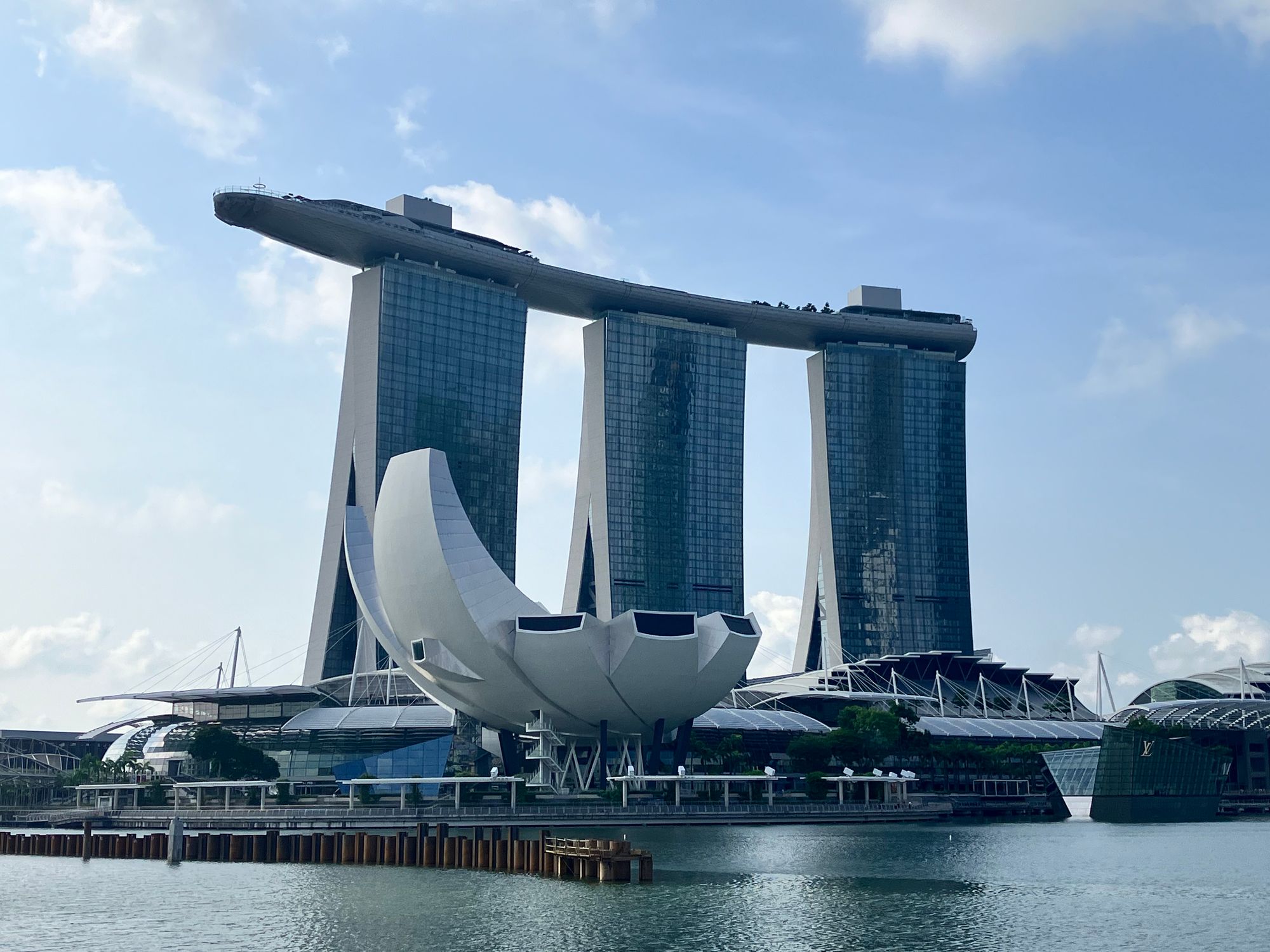
At the bottom of the hotel, however, is the most interesting space, the Arts and Science museum, which resembles a lotus flower, or a hand wide open, giving and inviting. Airy, light, and simplistic, it teaches a lesson about how being inconspicuous, less flashy, and ostentatious has its merits and its audience. Art and science were never contrasting entities, they both shape the world we inhabit, and I am glad that their unison has been acknowledged in this museum with such elegance. Gardens by the Bay is hugely popular, and its main stars are the gigantic Supertrees nestled in their alien-resembling Super Grove. Every evening, they come alive in a union of lights and music for a truly worthwhile performance.
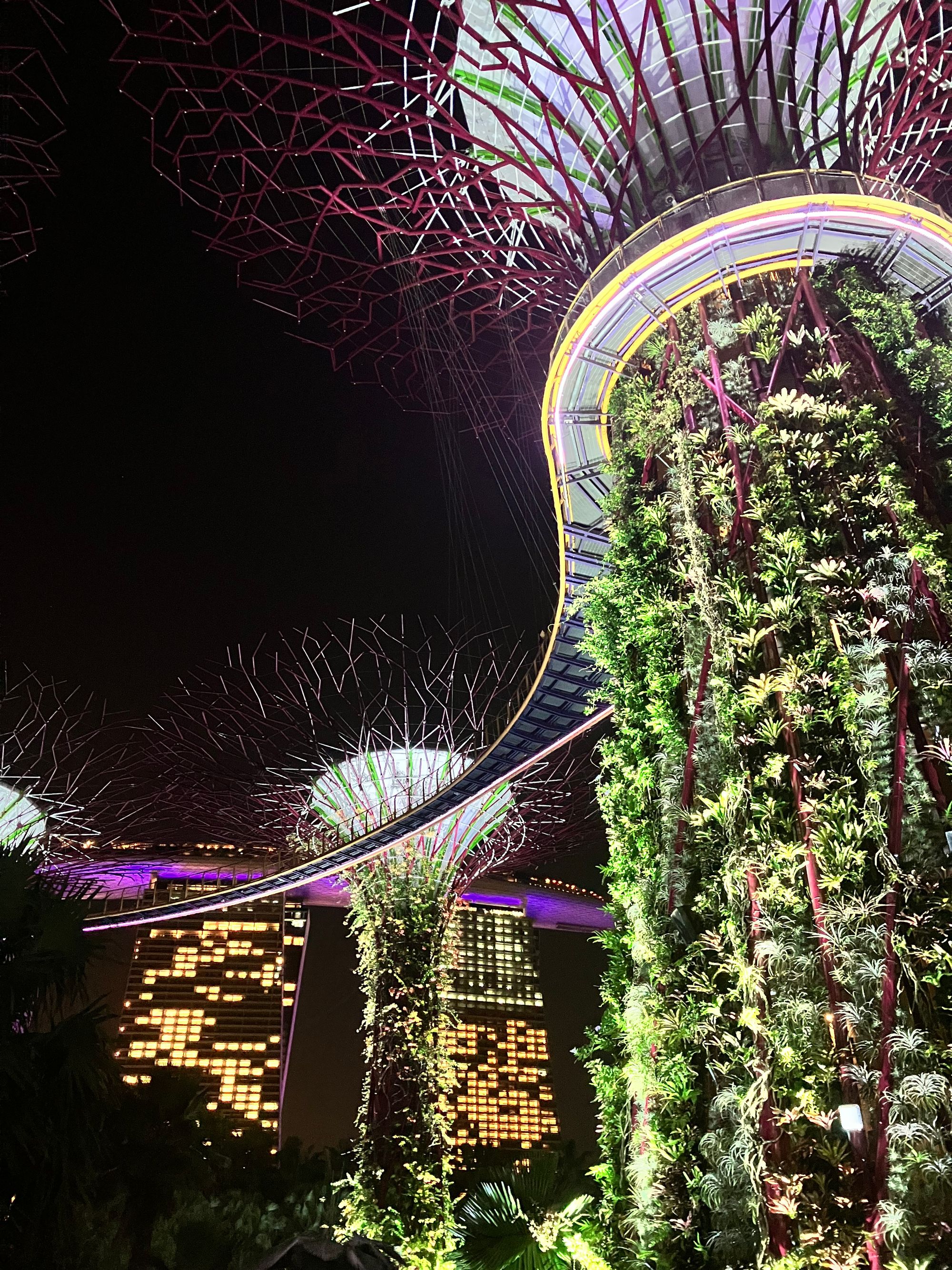
Singapore is not only a miracle of modern urban life, but also a testament of past times and a capsule that preserves heritage and reminds you of not so far away colonial era. Nowhere does this show better than in Katong neighborhood, full of heritage buildings, colonial bungalows, and colorful shophouses in bright colors. The whole area is a treasure chest of Peranakan culture, and I kept thinking about it as a portagioia (probably one of my favorite words in Italian because it brings me such joy to use it). Peranakan is a word you encounter a lot while in Singapore, and it means a hybrid identity born out of a mixing of Chinese, Malay, and Indonesian backgrounds. Needless to say, the result is a stunning medley of ceramic floral tiles, pastels, peacock feathers, intricate fans and work-of-art kimonos, and Chinese dragons and red lanterns. You are spoiled for choice when it comes to food, but also when it comes to just strolling and admiring unexpected street art, facades, or doors with elaborate carvings on them.
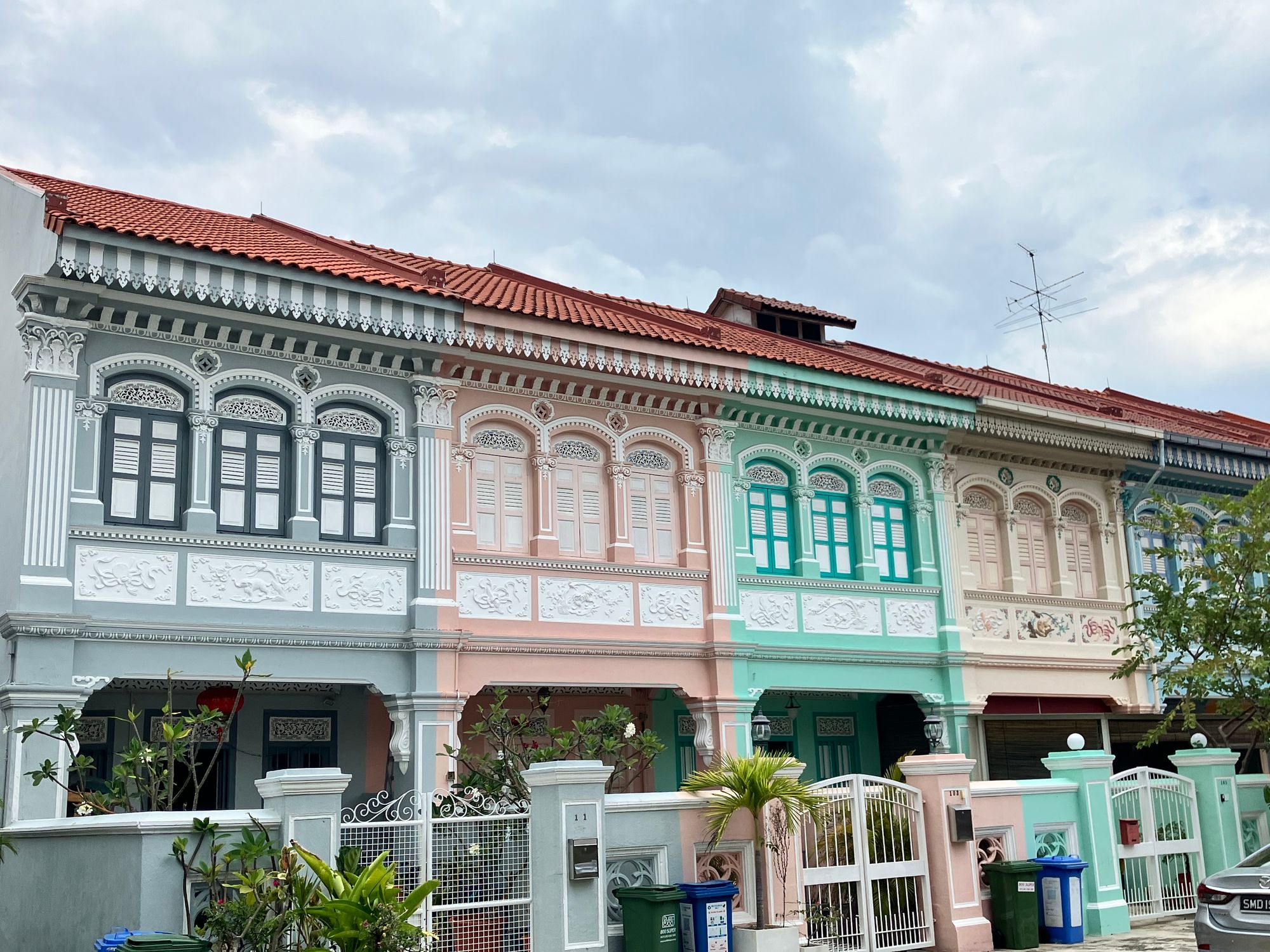
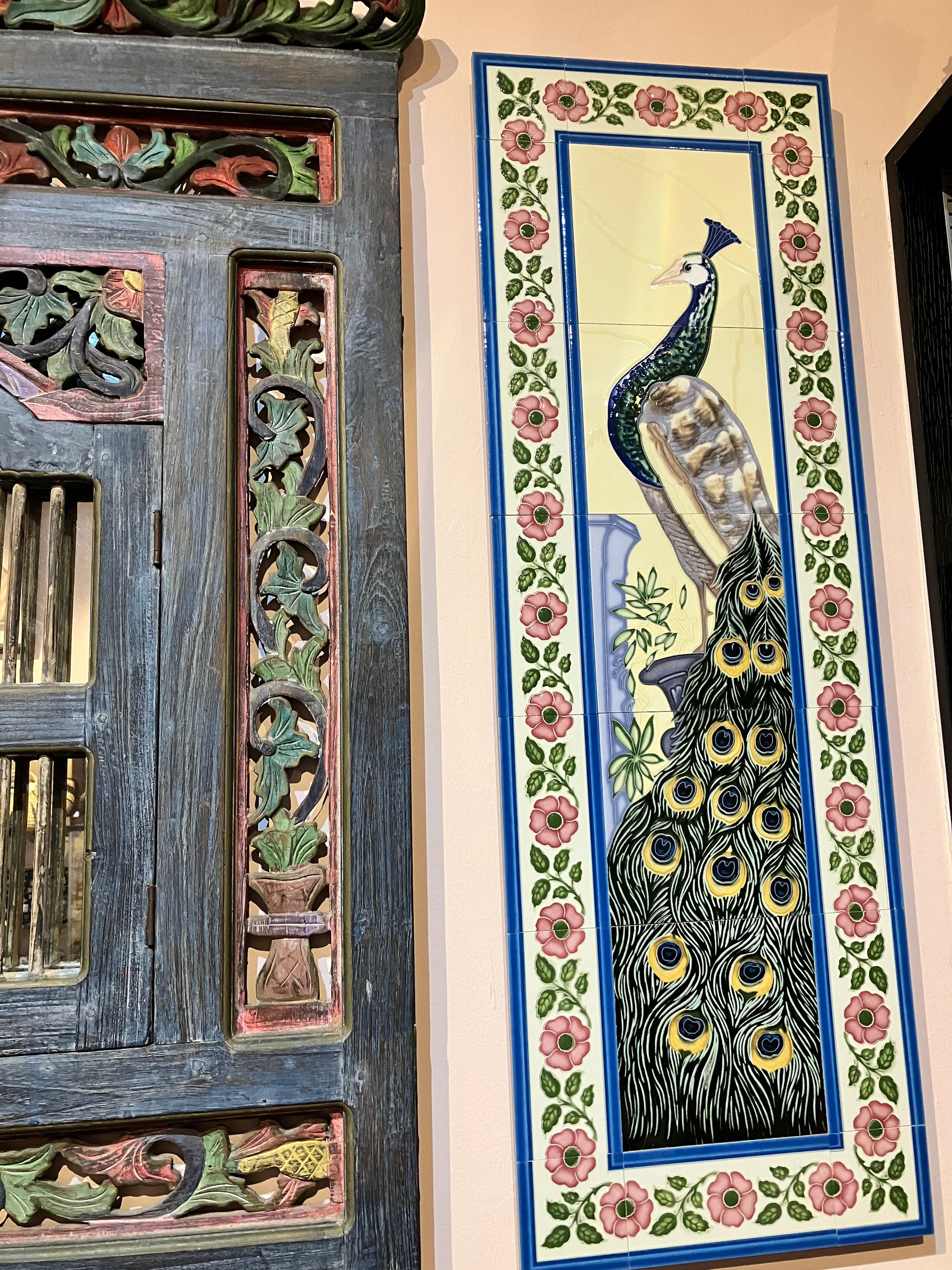
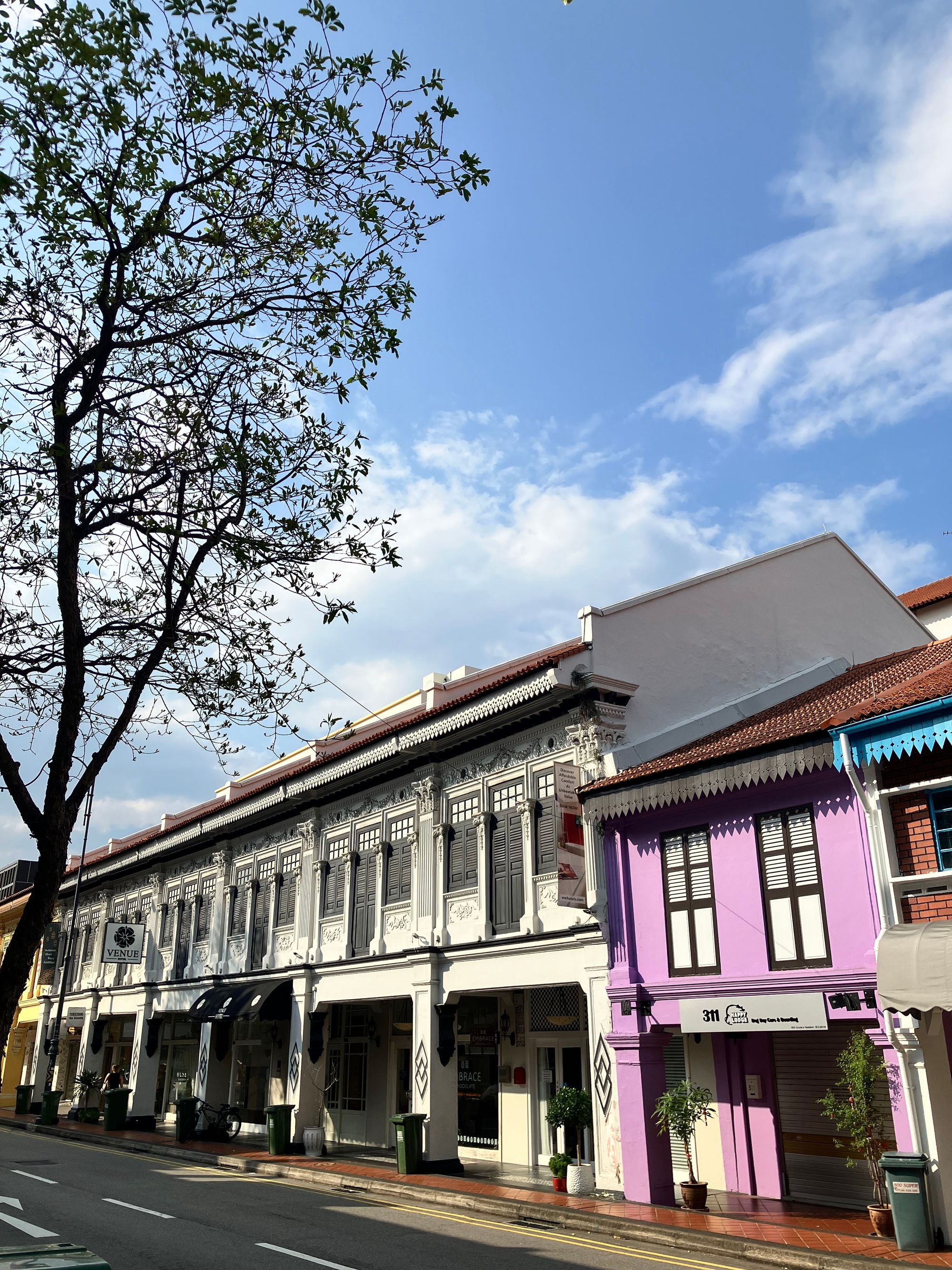
But I am getting ahead of myself here. Let's take a step back into the past. The whole region was on the confluence of many trading paths of the ancient world, and due to that highly sought after by various imperial powers. Two hundred years ago, give or take, Sir Stamford Raffles, a British colonial administrator and a significant contributor to the expansion of the British Empire, established a prime trading port of Singapore as a new colony for his country. The action of acquiring this island was a result of losing Malacca, another gem in its own right, to the Dutch, in a prolonged tug-of-war between Britain and the Netherlands over southeast Asia. Mental note: losses are sometimes gains in disguise because what started as a consolation prize turned into the creation of a commercial and cosmopolitan hub that continues to awe the world with its undiminished wealth and power. Over the years to come, traders from all over the world found a home in Singapore, and the influence of all of them made the Lion City what it is today, an amalgam of different heritages and cultures.
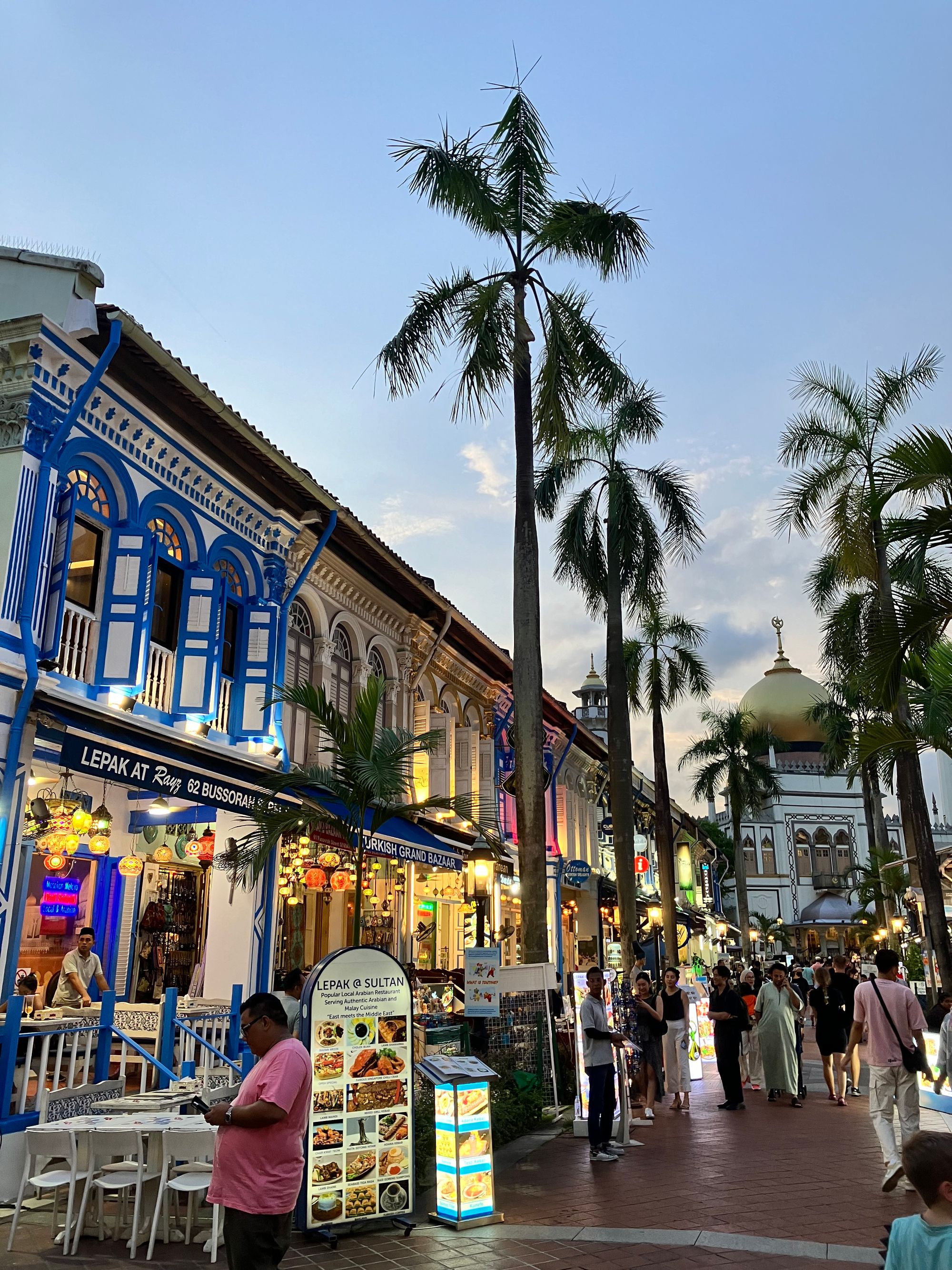
St. Andrew Cathedral is the oldest Anglican church in the city, a festive, pearly white, wedding-cake structure with a Gothic spire, tucked into the embrace of palms and other tropical shrubberies. As with many things in Singapore, it shouldn't work, but it miraculously does. Clarke Quay is a hip, young place best experienced during the night, but we also loved it being empty, in the middle of the day, because the sunlight exposed completely its beautiful rainbow-coloured facades. Once a place of warehouses, storages, barges, ugly docking, and shipping business, and today a pedestrian heaven full of bars, restaurants, and clubs. Singapore Botanic Gardens is a massive park that we just briefly glanced at, but even that was enough to understand its grandeur, beauty, and idyllic atmosphere. It made us painfully desire to live somewhere close by, take lunch walks there or come for a picnic, in another life in the tropics. It is too beautiful, and maybe it is better this way, that we couldn't stay too long and grasp its total splendor. We are hardly original, though. The area where the garden is located is suspiciously full of Europeans who are obviously not tourists, but going about their daily business of jogging and bringing their children from school. The suburb oozes privilege, generational wealth, and banking, while electric cars, elite kindergartens, and soccer afternoons in private schools are taken for granted. Not so discreet charm of the bourgeoisie.
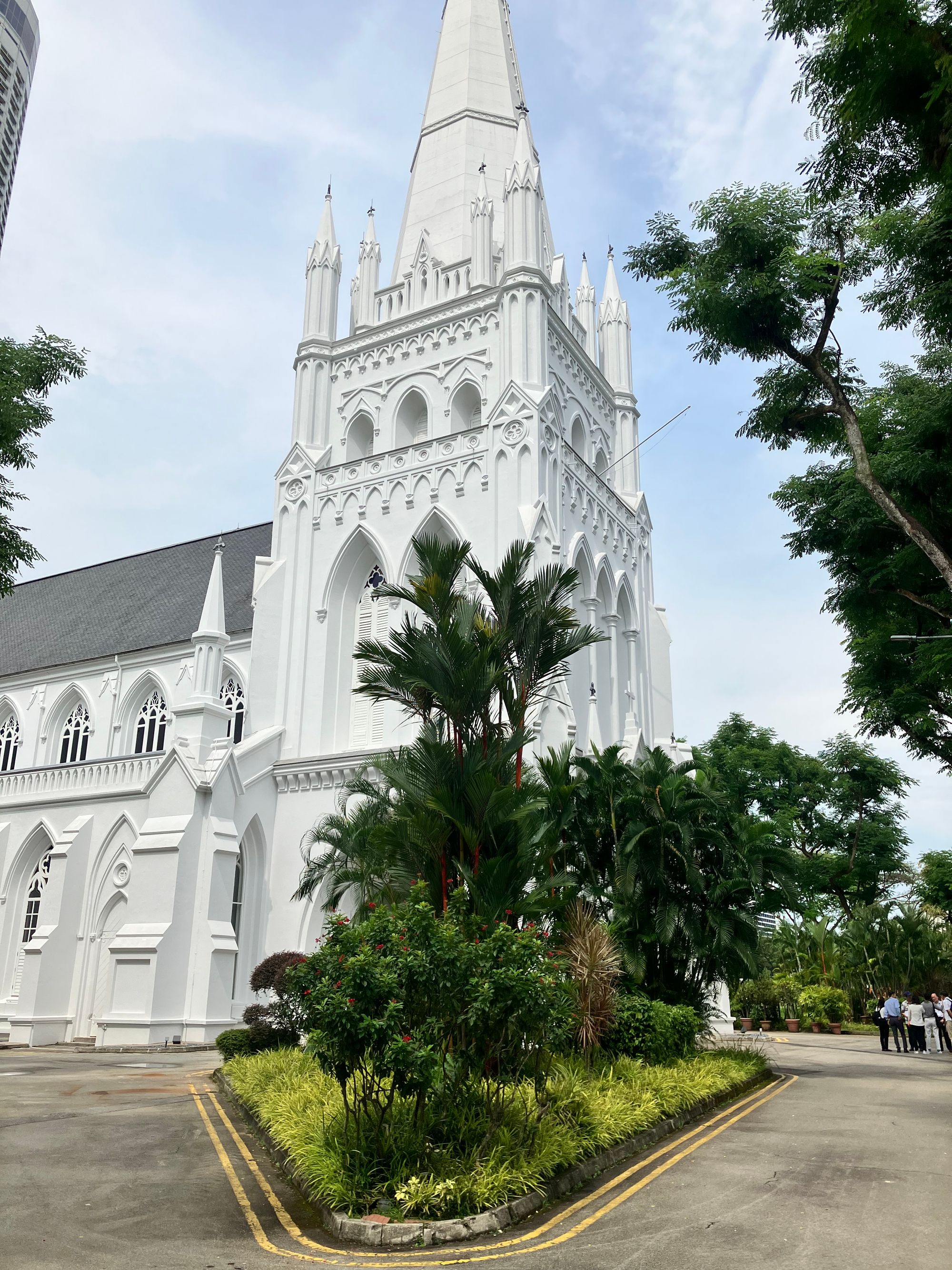
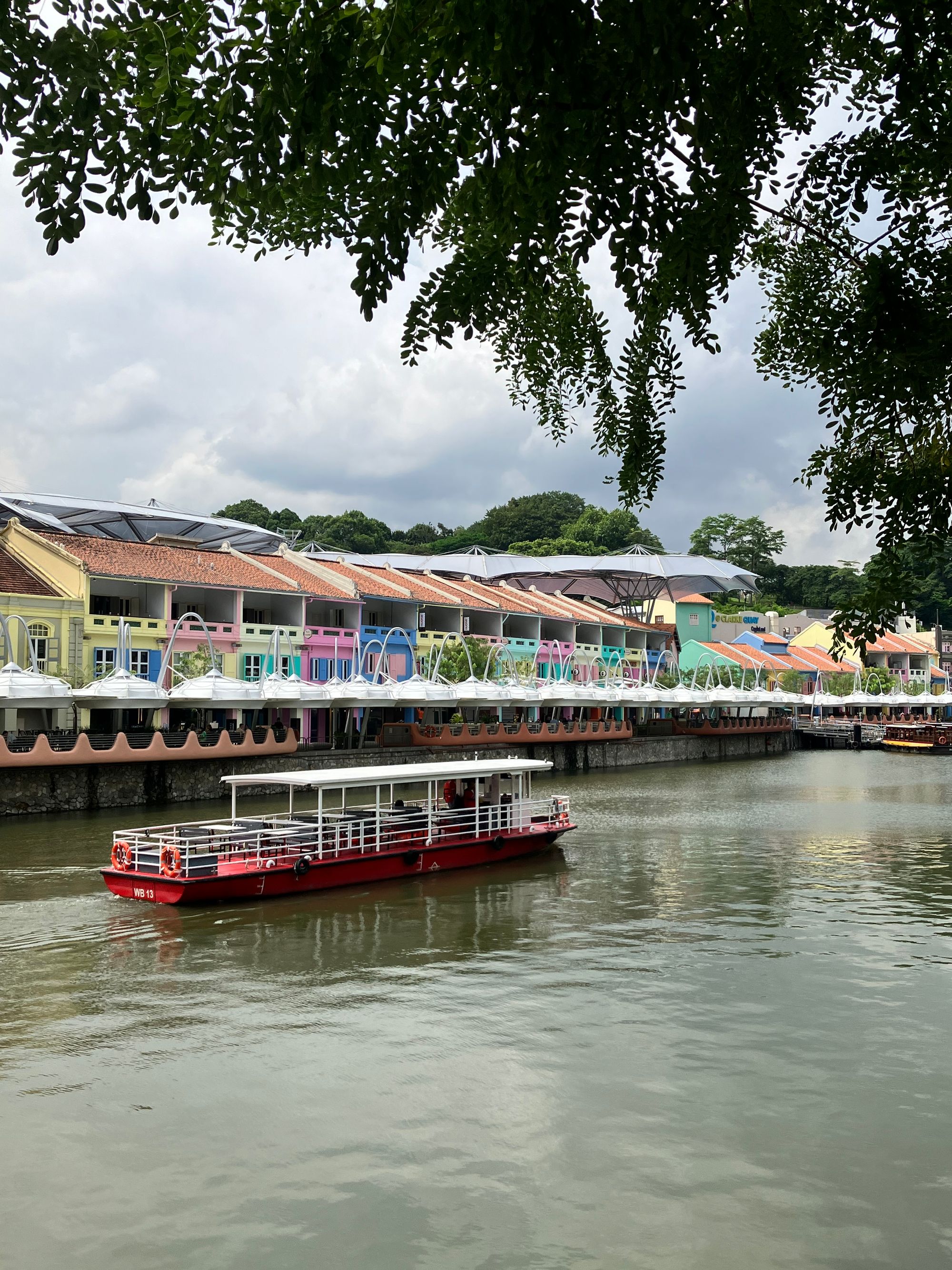
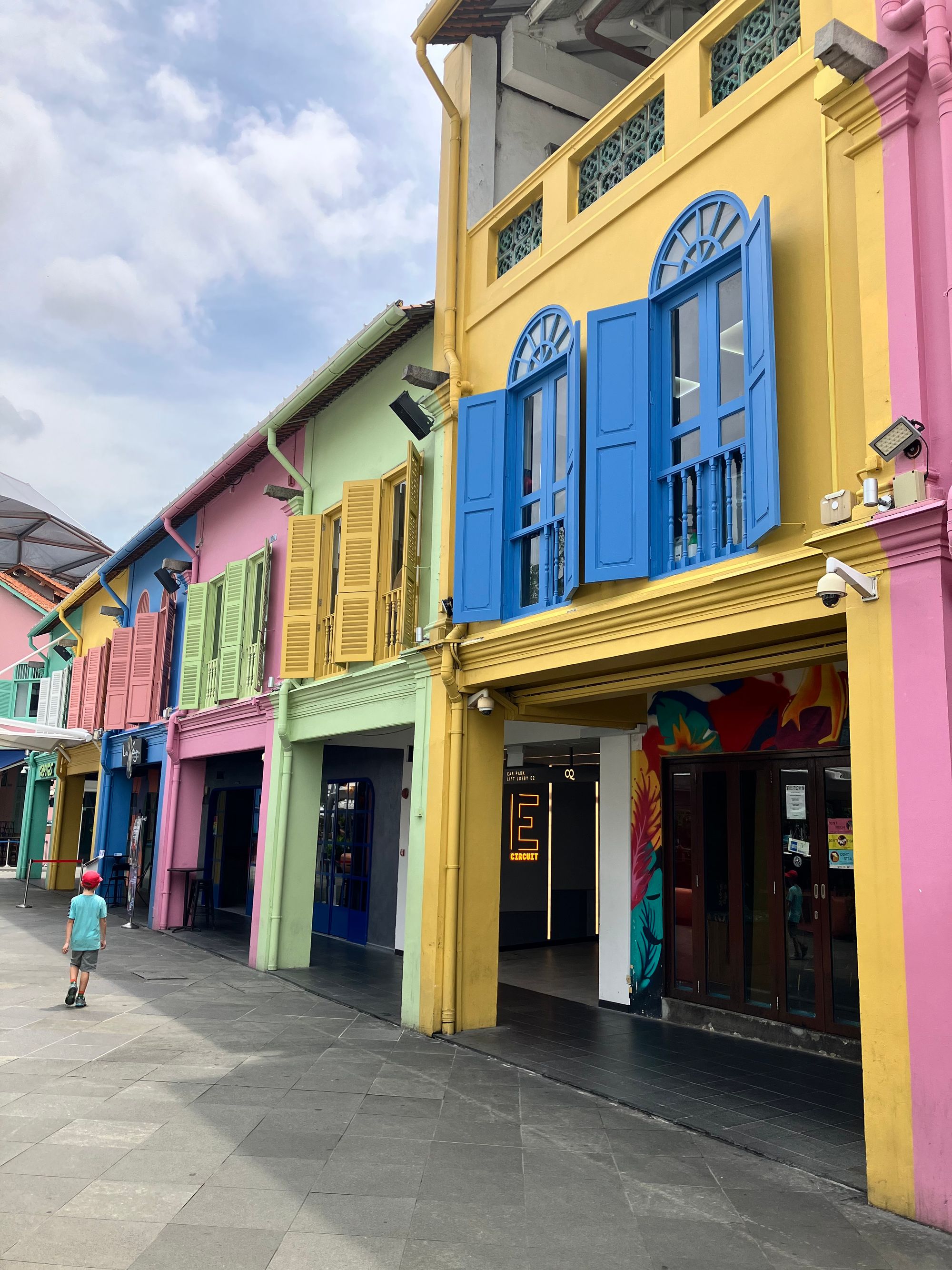
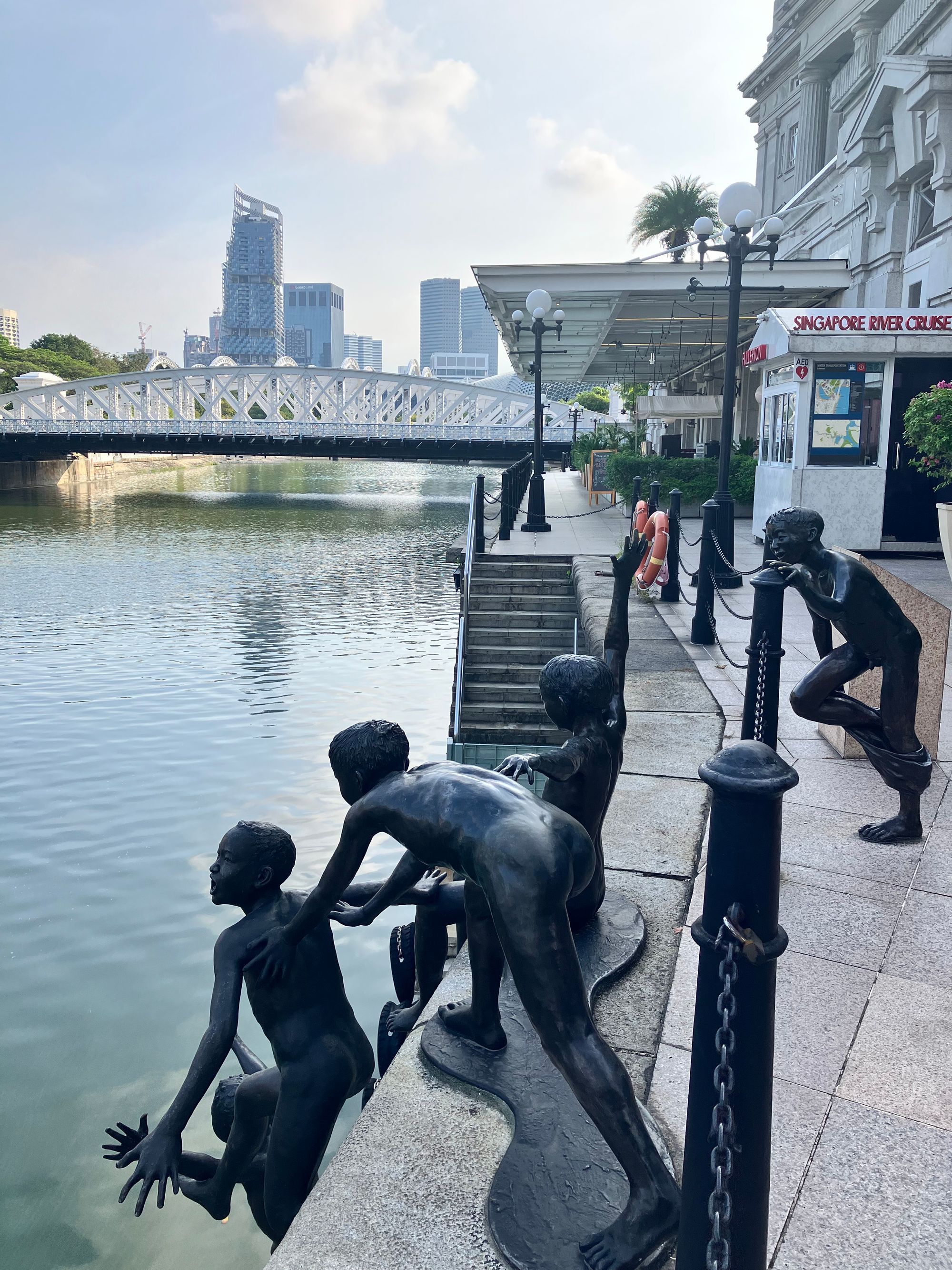
Singapore was the first place where we encountered the institution of hawker food courts. They exist in every Asian country, and they are places with numerous congregations of food stalls, where you can find and try all there is in the local cuisine, Indian, Chinese, Malaysian, or any imaginable crossing in between. These hawker centers were a result of an effort to move the street vendors into a more organized setting. Mind you, they are still chaotic, noisy, steamy, crowded, and unrefined, but for the amount of choices they offer and for the affordable prices of the food, it's worth a go. You might not find a seat, or you might have to share the communal table with a stranger, you might not know what you are ordering or eating. You might even end up with disappointing food (chop suey, I am looking at you). But chances are, you will still have an experience as authentic as possible as a tourist, and you will treat yourself to exhilarating, taste-bud-awakening, mind-expanding tastes. I fell in love with Assam Laksa, Lo Mai Ga, and beancurd skin rolls, while dumplings solidified on my list of food classics. From now on, the sexiest phrase in the universe is glutinous rice, and as expected, it inspires gluttony. My new ambition is to live six months in Singapore or the region, to give myself time to eat through all there is to taste. A lofty ambition, I know, and not at all in line with "summer body goals", but something's gotta give, and I always choose hedonism.
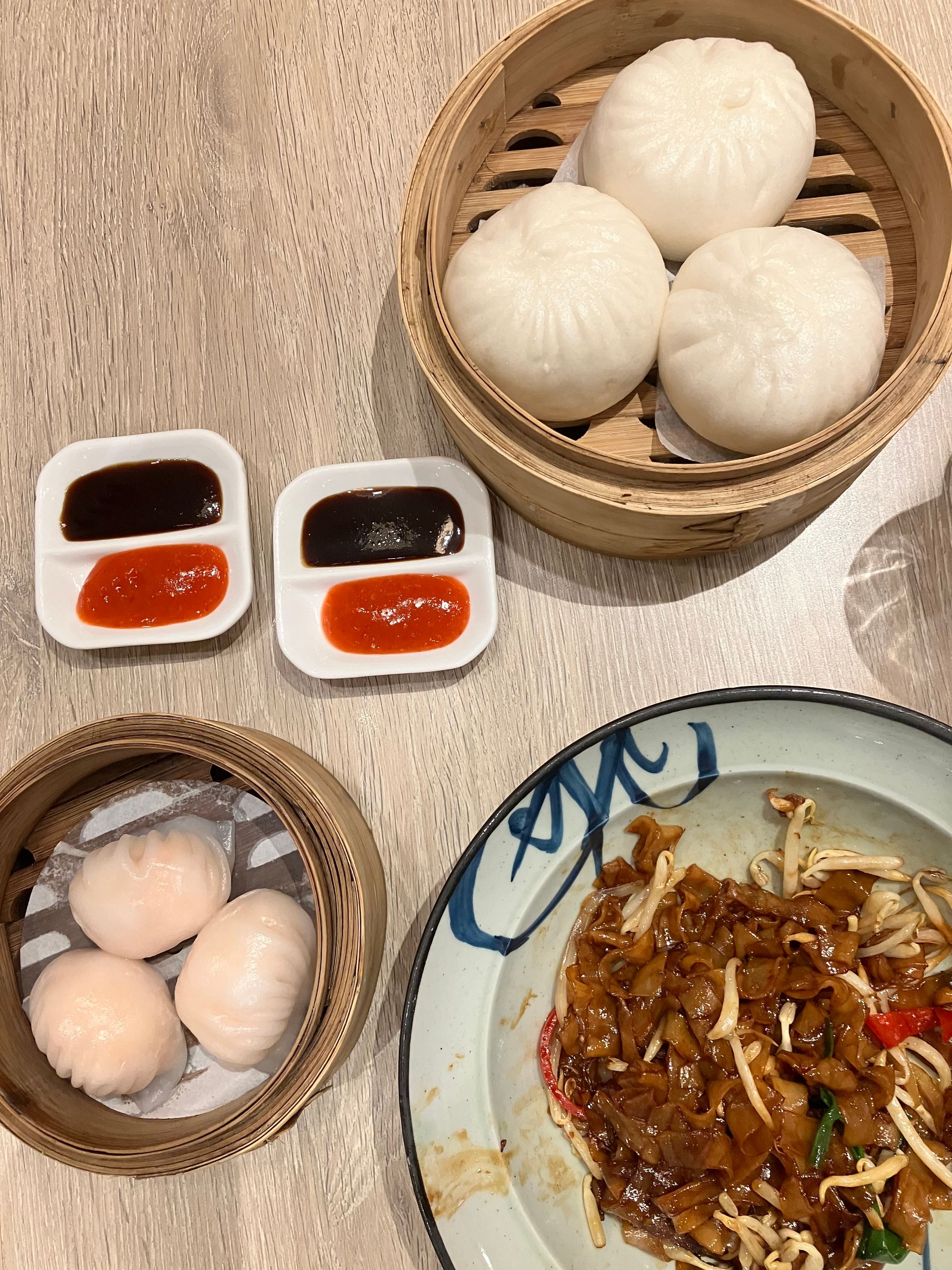
Singapore Sling is, of course, a famous cocktail, but to me, it is also this inner pull that the city exerts over you, once you return to your daily life, which, in our case, was snowy cold. The unbearable pull to go back, to experience it all again, anew, fresh, and with an acute awareness of what a special, fairytale magical place Singapore is. Now I would put aside the jet lag, the heat, the humidity, the sweat, the unavoidable bossiness of the locals, and the vastness of the city that forces you to spend considerable time navigating its subway system. What you are left with is the sensation that for a brief moment, you were somewhere dreamy, glittery, in a Disneyland for grown-ups. Unbelievably beautiful, but not superficial due to its over-the-top richness in history, and quirky to boot. Our son is currently very much into portals and we indulge him, but naturally don't believe in them. However, while in Singapore, we all went through one such portal and found our moment of wonderland amidst all the palms, the orchids, the bright colors and bold buildings, spirally staircases, dizzying waterfalls, pastel hues, artisanal facades, tiny teacups, and mystifying foods, smells and indistinguishable sounds. I wake up in the north and fantasize about going back once more. I want to see the world again through the child's eyes and to be surprised and thrilled at every corner of Singapore. So, Mattia gets to have the last laugh.
